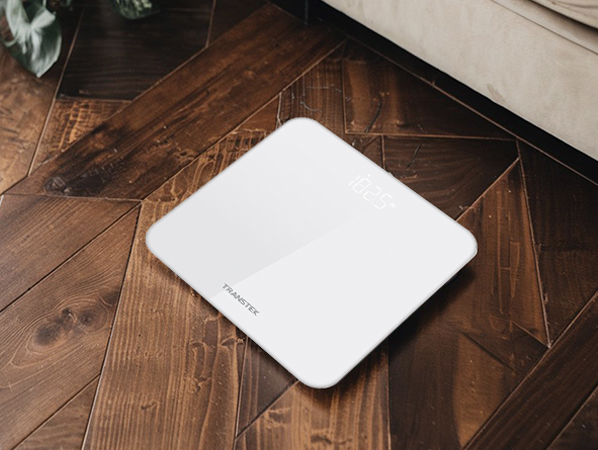In the world of telemedicine, the need for precise, real-time health data has never been more critical. One of the key measurements that telemedicine providers often monitor remotely is a patient's weight. Weight tracking plays an important role in managing conditions such as obesity, diabetes, and heart disease, all of which require ongoing monitoring. As the demand for remote healthcare services grows, the choice of tools for collecting health data is increasingly important.
In this blog, we’ll explore the key differences between Bluetooth weight scales and traditional scales and explain why telemedicine providers, like those using TeleRPM, are increasingly opting for Bluetooth weight scales and the bluetooth medical weight scale to enhance patient care and streamline their telehealth services.
Bluetooth weight scales are advanced, digital scales equipped with Bluetooth technology that allow them to sync wirelessly with telemedicine platforms like TeleRPM. These scales can measure a patient’s weight, and then automatically send this data to the healthcare provider in real-time. This seamless data transfer makes it easier for both patients and providers to track weight trends over time without the need for in-person visits.
Traditional weight scales, while reliable for in-person measurements, fall short when it comes to telemedicine. Here are a few limitations that make them less effective in remote healthcare settings:
Manual Tracking: With traditional scales, patients must manually record their weight and share the information with their healthcare provider. This adds extra steps for both the patient and the healthcare team and increases the chance for errors or forgotten measurements.
Lack of Connectivity: Traditional scales do not connect to telemedicine platforms, which means data must be transcribed or inputted manually by patients or providers. This is time-consuming and can delay timely decision-making.
Inconsistent Reporting: If patients forget to record their weight, the lack of consistent data makes it difficult for healthcare providers to track trends or make informed decisions regarding treatment plans.
Real-Time Data Syncing
One of the most significant advantages of Bluetooth weight scales, such as those integrated with TeleRPM, is their ability to transmit data in real-time. Once a patient steps on a Bluetooth-enabled scale, the data is instantly uploaded to the telemedicine platform, allowing healthcare providers to monitor patient weight remotely, without any delays. This immediate feedback means that healthcare providers can make quicker adjustments to treatment plans, recommend lifestyle changes, and provide more accurate, timely advice.
Automated Data Logging
The Bluetooth body weight scale automatically logs each measurement and send it directly to the cloud-based platform. This eliminates the need for patients to manually input data or worry about recording errors. For busy telemedicine providers, this streamlines data collection and improves overall efficiency. It also reduces the risk of missing important data, as the system automatically tracks every measurement.
Enhanced Accuracy and Consistency
Bluetooth weight scales are highly accurate and provide consistent measurements every time, ensuring that healthcare providers receive precise data. With traditional scales, there may be room for human error, such as inaccurate readings from improper use or inconsistent recording of weight. The automatic syncing of data ensures consistency and reliability over time, which is vital for making informed decisions in telemedicine.
Improved Patient Engagement
When patients use Bluetooth weight scales, they can see their progress in real-time through apps or portals connected to the telemedicine platform. This immediate access to their data motivates patients to stay engaged with their health and treatment plan. Additionally, healthcare providers can offer more personalized support, as they have up-to-date information to share with patients during virtual consultations.
Better Remote Monitoring for Chronic Conditions
For patients with chronic conditions like heart disease, obesity, or diabetes, consistent weight monitoring is crucial for managing their health. Bluetooth weight scales enable telemedicine providers to closely monitor these patients over time, without requiring them to travel to a clinic. Providers can spot potential issues earlier, adjust treatments accordingly, and improve patient outcomes.
Seamless Integration with Telemedicine Platforms
Telemedicine platforms like TeleRPM are designed to work smoothly with Bluetooth weight scales. The integration allows patient data to be automatically updated in the system, where it can be analyzed, tracked, and reviewed in real time by healthcare professionals. This seamless integration enhances communication between patients and providers, making the virtual healthcare experience more effective and efficient.

As telemedicine continues to grow, the need for accurate, real-time health data will only increase. Bluetooth weight scales, with their advanced features and seamless integration with platforms like TeleRPM, offer a significant advantage over traditional scales in providing comprehensive, efficient, and reliable care. With Bluetooth weight scales, telemedicine providers can offer better patient outcomes, enhance monitoring of chronic conditions, and streamline the remote healthcare experience for both patients and providers alike.
For telemedicine providers looking to stay ahead of the curve and provide top-notch care to their patients, integrating Bluetooth weight scales into their workflow is an essential step toward better health management and improved patient engagement.
Bluetooth® 5.0 Technology
The Bluetooth® weight machine TeleRPM Scale (Bluetooth® LE) 2022, serves as both a RPM scale and a BLE scale. It can be connected with RPM health platform around the world. Then it can automatically transmit the weight data in real time to the users' doctor, family members, or other healthcare providers, and the physicians will contact the users if there are any abnormal readings on the Bluetooth® weight machine.
NEXT
+86-0760-85702291